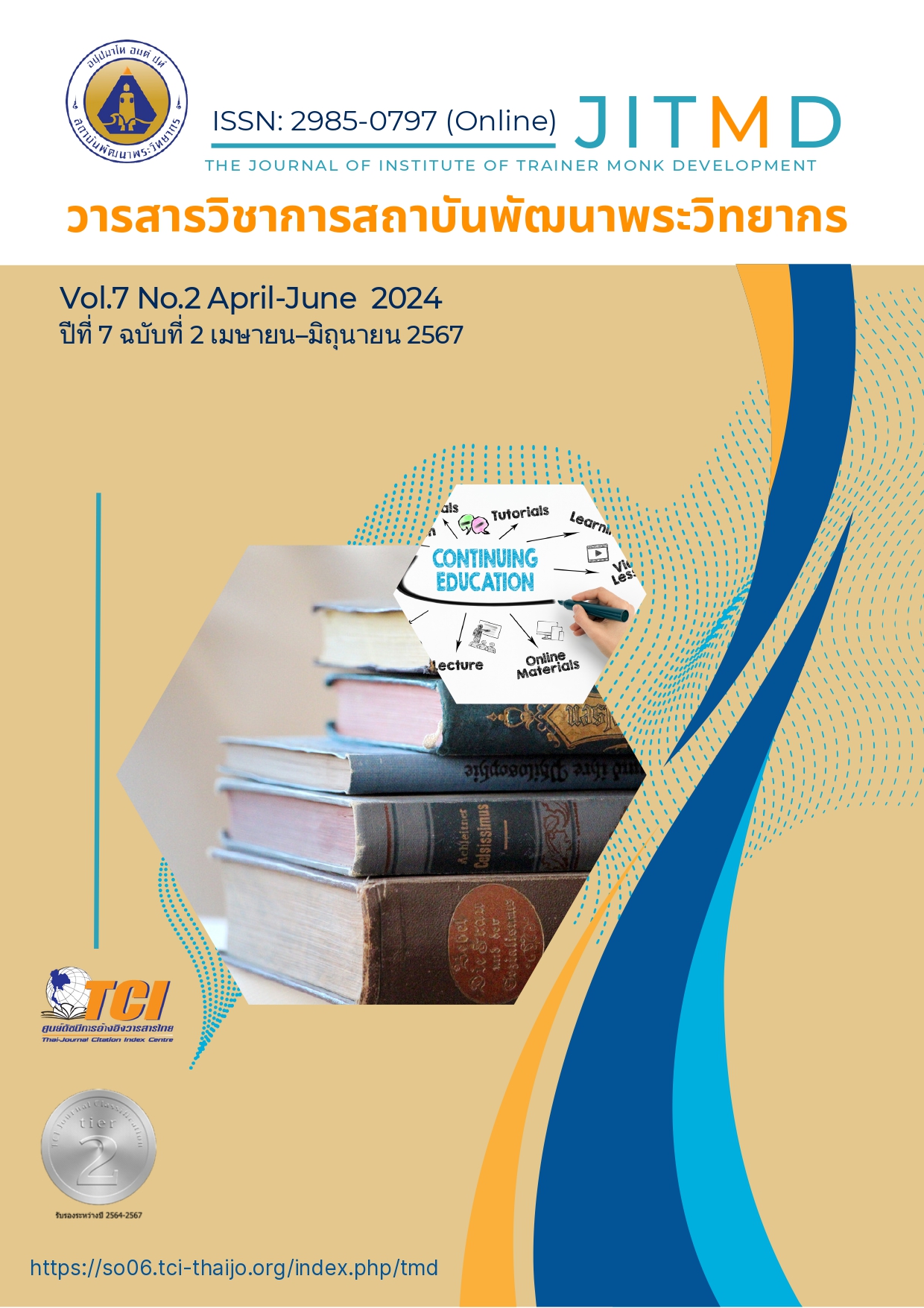Development of Assessment Guidelines Integrated with Teaching Using Problem-based Methods to Develop Mathematical Problem-Solving Skills in a Unit of Learning About the Surface Area and Volume of the Pyramid, Cone and Sphere of The Grade 3 Students of Secondary School
Main Article Content
Abstract
This research study aimed to develop the integrated learning assessment approaches with mathematical problem-solving skills in the topic of the surface area and volume of the pyramid, cones and spheres of The Grade 3 Students of Secondary School and study to the quality Assessment Guidelines Integrated with Teaching using Problem-based Methods to Develop Mathematical Problem-solving Skills in a Unit of Learning about the Surface Area and Volume of the Pyramid, Cone and Sphere of The Grade 3 Students of Secondary School. The samples in this research were one class of the nineth-grade, consisting of thirty-five students, Watsuthiwararam School, Sathorn District, Bangkok, in the first semester of the academic year 2023. The research tools consisted of 1) lessons plans 2) mathematical worksheets with exercises, and 3) the tests focusing on mathematical problem-solving skills (The test comprised pre-test and post-test.) The data were analyzed by using frequency, percentage, and mean. The relative gain scores and the content analysis are as follows: 1. Assessment guidelines using the problem-based approach consists of 4 steps: 1) designing the assessment 2) creating and developing tools, 3) evaluating mathematical problem-solving skills, 4) reporting and implementing assessment results. 2. The results of mathematics problem-solving skills are as follows: students had increasing average scores after implementing the assessment guideline, and students passed the assessment criteria for mathematical problem-solving skills in all components of problem-solving skills in every mathematics lesson plans. 3. The quality of learning assessment guidelines for developing mathematical problem-solving skills on subjects the surface area and volume of the pyramid cones and spheres of the nineth-grade students reveled that the assessment guidelines were useful for Teachers in terms of improving and developing learning activities to increase the mathematical problem-solving skills in students and the providing feedback could be beneficial for student as a guideline to develop mathematical problem-solving skills in themselves.
Article Details

This work is licensed under a Creative Commons Attribution-NonCommercial-NoDerivatives 4.0 International License.
บทความที่ได้รับการตีพิมพ์เป็นลิขสิทธิ์ของวารสารวิชาการสถาบันพัฒนาพระวิทยากร
ข้อความที่ปรากฎอยู่ในบทความที่ได้รับการตีพิมพ์ในวารสาร ถือเป็นความรับผิดชอบของผู้เขียนบทความ และข้อคิดเห็นนั้นไม่ถือว่าเป็นทัศนะและความรับผิดชอบของกองบรรณาธิการวารสารวิชาการสถาบันพัฒนาพระวิทยากร
References
กระทรวงศึกษาธิการ. (2551). หลักสูตรแกนกลางการศึกษาขั้นพื้นฐาน พุทธศักราช 2551.กรุงเทพมหานคร: โรงพิมพ์ชุมนุมสหกรณ์การเกษตรแห่งประเทศไทย.
นฤชล ศรีมหาพรหม. (2549). การพัฒนาแบบฝึกทักษะคณิตศาสตร์ เรื่อง การแก้โจทย์ปัญหาสมการสำหรับชั้นมัธยมศึกษาปีที่ 2 โรงเรียนนางรอง อำเภอนางรอง จังหวัดบุรีรัมย์.
วิทยานิพนธ์ครุศาสตร์มหาบัณฑิต. สาขาวิชาหลักสูตรและการสอน. บัณฑิตวิทยาลัย: มหาวิทยาลัยราชภัฏบุรีรัมย์.
ศิริชัย กาญจนวาสี. 2556. ทฤษฎีการทดสอบแบบดั้งเดิม. (พิมพ์ครั้งที่ 7). กรุงเทพมหานคร: โรงพิมพ์แห่งจุฬาลงกรณ์มหาวิทยาลัย.
ศิริเดช สุชีวะ. 2546. “หลักการประเมินการเรียนรู้”. ใน สุวิมล ว่องวาณิช (บรรณาธิการ). การประเมินผลการเรียนรู้แนวใหม่. กรุงเทพมหานคร: โรงพิมพ์แห่งจุฬาลงกรณ์มหาวิทยาลัย.
สถาบันส่งเสริมการสอนวิทยาศาสตร์และเทคโนโลยี. (2551). ทักษะและกระบวนการทาง คณิตศาสตร์. กรุงเทพมหานคร: 3-คิว มีเดีย.
สถาบันส่งเสริมการสอนวิทยาศาสตร์และเทคโนโลยี. (2546). คู่มือวัดผลประเมินผลคณิตศาสตร์. กรุงเทพฯ: กระทรวงศึกษาธิการ.
กระทรวงการศึกษาธิการ. (2550). การจัดการเรียนรู้โดยใช้ปัญหาเป็นฐาน. กรุงเทพฯ: สำนักงานเลขาธิการสภาการศึกษา กระทรวงศึกษาธิการ.
สำนักวิชาการและมาตรฐานการศึกษา. (2560). มาตรฐานการเรียนรู้และตัวชี้วัดกลุ่มสาระการเรียนรู้คณิตศาสตร์ วิทยาศาสตร์ และสาระภูมิศาสตร์ ในกลุ่มสาระการเรียนรู้สังคมศึกษา ศาสนา และวัฒนธรรม (ฉบับปรับปรุง พ.ศ. 2560) ตามหลักสูตรแกนกลางการศึกษาขั้นพื้นฐาน พุทธศักราช 2551. กรุงเทพฯ: สำนักวิชาการและมาตรฐานการศึกษา สำนักงานคณะกรรมการการศึกษาขั้นพื้นฐาน กระทรวงศึกษาธิการ.


